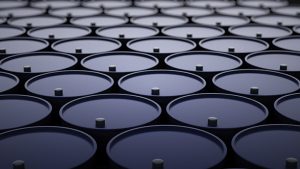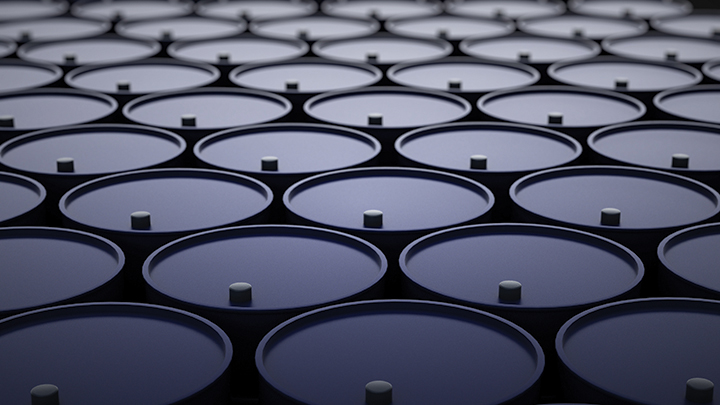
 An external lubricant leak of one drop per second is equal to 420 gallons of oil in a 12-month period. It has been estimated that over 100 million gallons of lubricants could be saved every year in North America if external leakage from lubrication systems was eliminated. In Canada alone, over 12 million gallons of oil is wasted due to leakage. Besides the initial cost of the lubricant, the economic effects of lubricant leakage include inefficient machinery operation, environmental damage, safety and fire hazards, accident liability, premature machine component failure, poor quality manufacture, and increased capital costs.
An external lubricant leak of one drop per second is equal to 420 gallons of oil in a 12-month period. It has been estimated that over 100 million gallons of lubricants could be saved every year in North America if external leakage from lubrication systems was eliminated. In Canada alone, over 12 million gallons of oil is wasted due to leakage. Besides the initial cost of the lubricant, the economic effects of lubricant leakage include inefficient machinery operation, environmental damage, safety and fire hazards, accident liability, premature machine component failure, poor quality manufacture, and increased capital costs.
Let’s take a closer look at each of the effects of industrial lubricant leakage.
1. Do you monitor your plant’s oil consumption?
Logic: Exxon Mobil Corporation completed a U.S. study that compared hydraulic reservoir capacity to actual oil consumption.
The study resulted in the development of “Hydraulic Fluid Index” (HFI), which concluded that in the United States the national HFI is four. This means that every year in the U.S., the average plant uses four times more oil than its machines actually hold.
2. Do you monitor your plant equipment’s operational efficiency?
Logic: A very high percentage of manufacturing plant and industrial facility managers mistakenly assume that if a machine is available and working, it is operating satisfactorily. This assumption is a serious and costly mistake. What these managers fail to consider is whether or not the machine is actually operating at its maximum “performance efficiency.”
The strategy of Total Productive Maintenance calls for a world-class goal in which the overall equipment effectiveness of machinery should be at least 85 per cent, where availability should equal 90 per cent, performance efficiency should equal 95 per cent, and the quality rate should be 99 per cent.
I.e.: .90 X .95 X .99 X 100 = 84.645%
If a hydraulic system has either an internal or an external leak, the performance efficiency will be directly affected. For example, if the designed cycle time of a hydraulic circuit is three seconds, but the leakage causes the cycle time to slow to six seconds, the result will be a reduction in performance efficiency of 100 per cent, even though the circuit is still performing. If there are several hydraulic leaks on the machine, the performance efficiency can be reduced even more dramatically, which, in turn, will affect the overall effectiveness of the machine.
This example confirms that machine efficiency is much more important than availability, or what plant managers like to refer to as “uptime.” Many process plants and manufacturing facilities in North America have OEEs in the range of 50 to 60 per cent “even though machine availability is 90 per cent or higher. In hydraulic machinery, the primary cause of reduced performance efficiency is always internal or external fluid leakage.
3. Do you monitor all possible environmental damage caused by leakage?
Logic: About 15 million gallons of hydraulic fluids are used annually for industrial applications in Canada. Recent environmental studies show that much of this fluid ends up in ground water, rivers, and lakes and on the ground itself, causing untold damage to the environment, fish, and wildlife. Internationally, marine, forestry, mining, and agriculture industries in particularare responsible for much of the environmental damage, much of which goes unreported and ignored. The overall environmental damage caused by cumulative leaks worldwide should be of far greater concern to environmentalists and industry than that which is caused by an occasional pipeline leak.
4. Do you constantly monitor safety, fire hazards, and accident liability?
Logic: Every day in North America, a machine operator or technician slips and falls as a result of a lubricant leak. This fall costs an average of $200 per incident in lost wages.
If we calculate interruptions to production, workers compensation costs, and the cost of the probable lawsuits, the cost may be hundreds of thousands of dollars. Hydraulic lubricants under high pressure can cause serious fire hazards. The potential for these fire hazards is particularly high wherever ignition sources are present, such as in die-casting, plastics forming, automatic welding, and heat-treating processes.
5. Do you analyze the cause of every lubricated machine component failure?
Logic: It is a statistical fact that 70 per cent of machine component failures are caused by contaminated lubricants. Many of these contaminated fluids are a direct result of fluid leaks from machinery. If oil leaks past seals, contaminants in the form of dust and dirt can enter the lubrication system, causing increased rates of wear through abrasion and scoring of moving parts.
Think of a hydraulic cylinder rod extending under pressure: as the rod extends, oil leaks past the seal. As the rod retracts, contaminants will stick to the oil film on the rod like fly paper and the system has become contaminated. The same is true of shafts on rotating gear drives or pumps. As the oil leaks past the seal, contaminants enter along the shaft past the seal causing contamination.
6. Do you constantly monitor manufactured or process product quality?
Logic: If a lubrication system is contaminated with dust and dirt, another severe problem can develop directly affecting the quality of manufacture. Much of today’s hydraulic machinery is controlled by electro-hydraulic servo valves, which are extremely sensitive to contaminants. The contamination will cause servo valves to stick or operate erratically, which can affect the accuracy of the process, or the dimensions of the products being manufactured generating waste. This is directly related to the machine’s overall equipment effectiveness formula: “Availability X Performance Efficiency X Quality Rate” provided in the example in question two at left. Therefore, the hydraulic leak causes fluid contamination, which causes hydraulic controls to operate erratically, which can cause poor manufacturing quality or cause an increase in scrap, ultimately a high financial loss.
Manufacturing facilities and process plants must consider lubricant leakage as a direct economic concern and explains why the calculation of the “overall equipment effectiveness” formula must be applied consistently to improve machinery reliability. It is essential for the economic survival of our industrial facilities.
7. Do you monitor and analyze any increase in capital costs related to lubricant leakage?
Logic: All the effects of lubricant leakage can result in the necessity of a manufacturing plant or production facility being confronted with the possibility of the premature purchase of new equipment. The life cycle of equipment can be extended significantly if the increased rates of wear and the resulting loss of equipment reliability are reduced by effectively eliminating, or at the very least, managing lubricant leakage.

